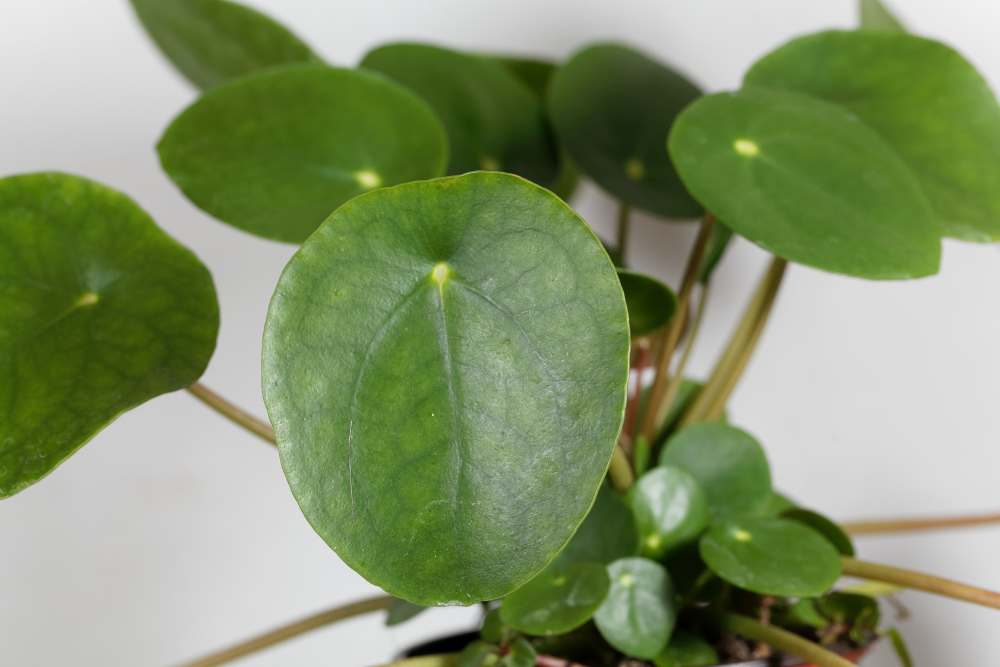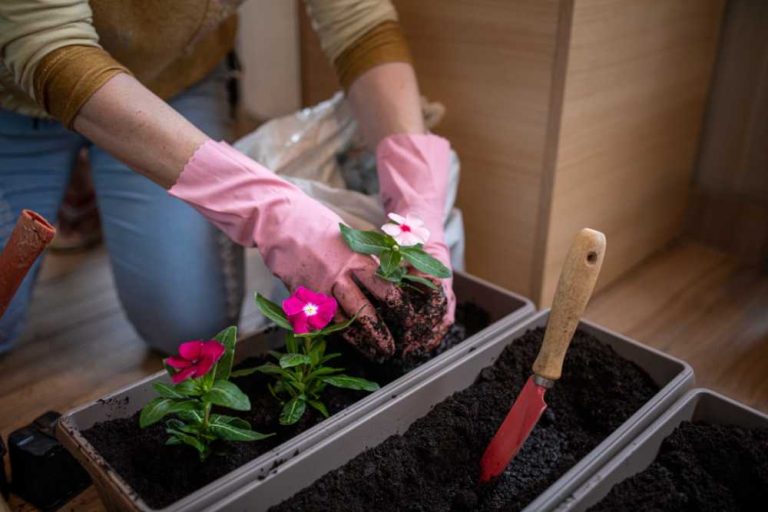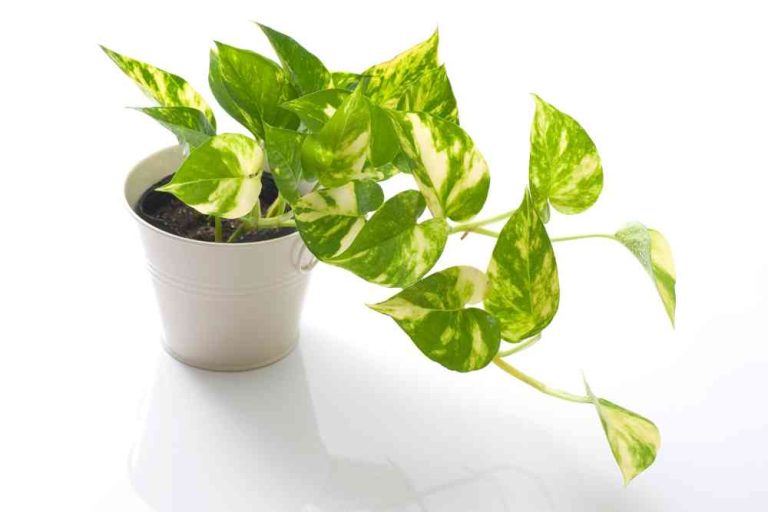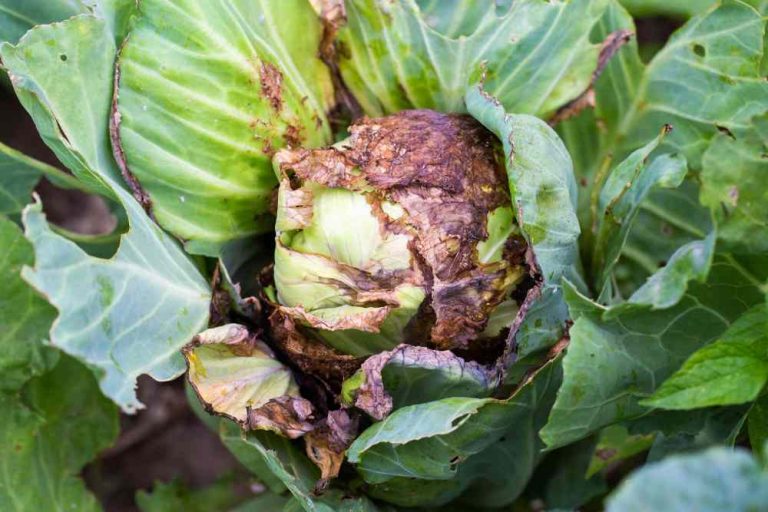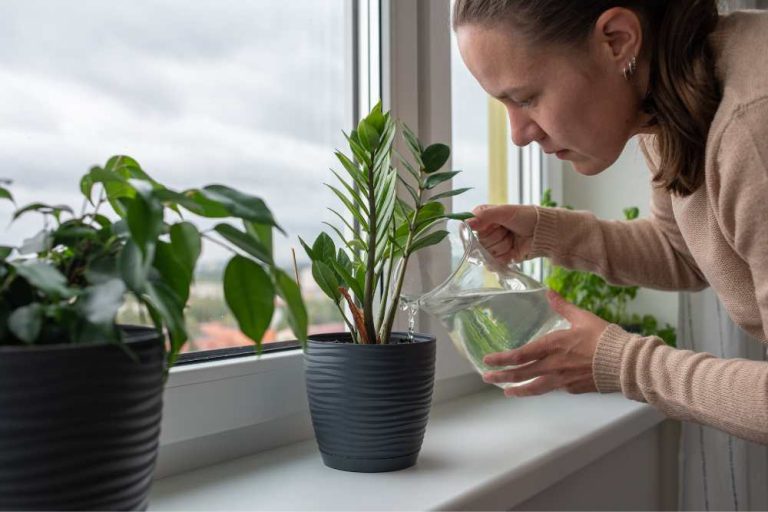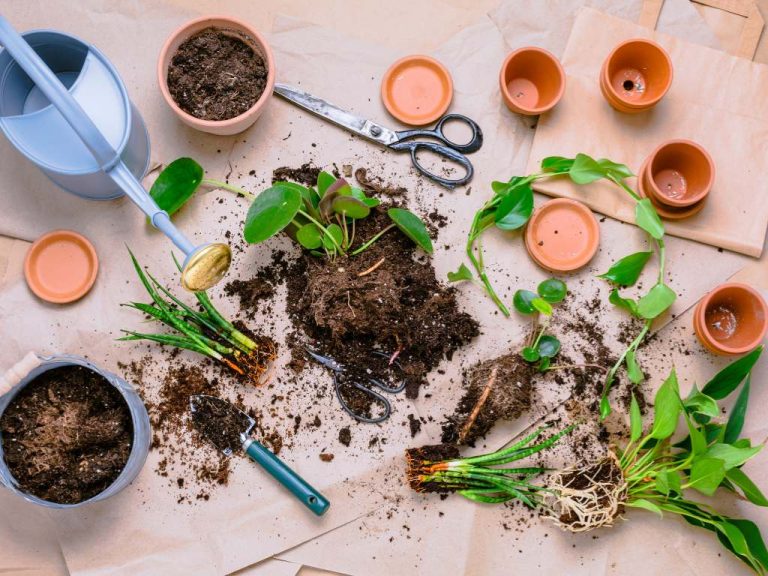10 Reasons Chinese Money Plant White Spots on Leaves – Causes and Solutions
There are numerous names for the Pilea Peperomioides, including the Chinese money plant, the UFO plant, and the low-maintenance Pilea peperomioides species that grow well beside a window in a bright area.
Still, keeping it out of direct sunlight is better as too much sunlight can burn the leaves. Take your time to choose the ideal location because insufficient light might cause the leaves to fade and the plant’s general health to suffer.
Pilea peperomioides are often trouble-free houseplants, but like with any plant, they may experience unique leaf problems. White spots on money tree leaves might be natural, but they can also be signs of pest infestations such as fungi, bacteria, insects, and other parasites.
Even though the leaves of some trees may have white spots, you may treat them easily if you know what is causing them. By reading this article, you can discover the causes of the Chinese money plant white spots, along with some ingenious fixes.
Why Does My Chinese Money Plant Have White Spots?
Issues With Sunlight
You should evaluate the light exposure of the plants if you notice white patches on the foliage of your money tree. Sunburned tree leaves will often become white or develop white patches. This indicates that the excessive amount of light the leaves receive each day is possibly causing them to burn from the inside (or edges).
Money trees do not grow well in direct sunlight; therefore, white flaky spots on their leaves are a clear indication that they need to be moved away from the sun. The leaves will turn brown if the plants are exposed to full sun for an extended period.
Excessive fertilizer
Fertilizer is another potential reason why plants develop white patches. Overfeeding your plant with fertilizer can result in mineral build-up as well, but the plant will usually display other signs of distress as well. It’s important to remember not to fertilize too frequently while using slow releasers fertilizers, which means the soil will absorb minerals and nutrients at a slower rate.
Poor airflow
A number of health issues, including the spread of fungi illnesses, can be directly attributed to stagnant air. Even if no houseplant enjoys being kept in a draft, it’s nevertheless crucial for air to move freely. Fungal illnesses are one of the most common indications of impaired circulation.
Powdery Mildew and Other Fungus Related Infections
You should avoid fungi since they progressively damage your money trees and other plants. If you notice white leaf patches on your tree leaves, powdery mildew or other fungus are most likely to blame. The white fungus first appears as tiny dots on money trees before spreading to cover most of the leaves.
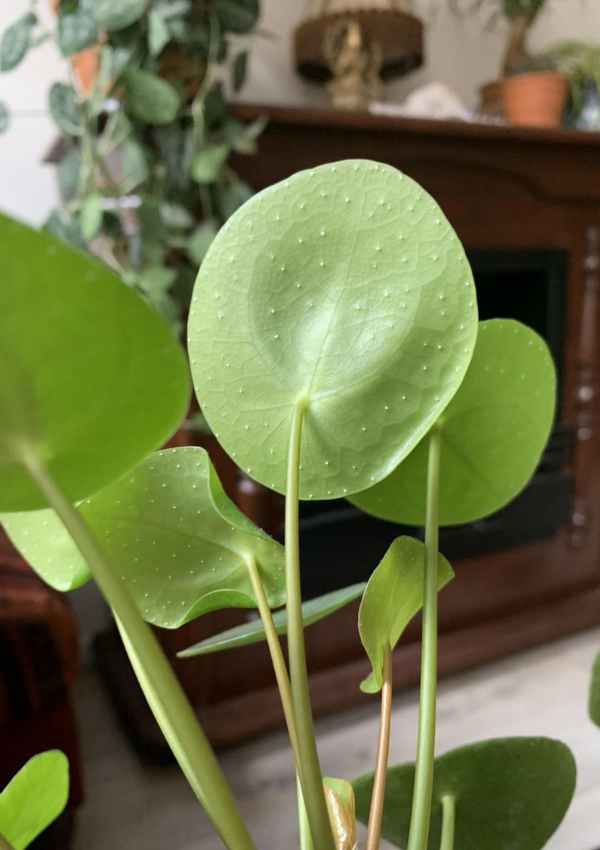
You should also be looking for root rot and septoria leaf spot for fungi. Your money tree plants could be killed by this fungus, which causes flaky and pale spots on the leaves. Fungi do not infect your plants randomly; thus, to determine whether your plants are genuinely affected by fungi, you must first identify the source of the infection.
Money trees and other plants frequently suffer from root rot and other fungal infections caused by soil, especially when they are overwatered. They can also receive the disease from nearby diseased plants.
Gray mold (Botrytis) is a common fungal disease in houseplants, but thankfully, it does not occur frequently on Pilea. On older leaves, it appears as a grey bull’s-eye form. It often begins by growing on plant debris left at the plant’s base. The solution to this issue is as simple as maintaining appropriate plant hygiene.
Issues with Humidity
You can have white patches on the leaves of your money tree due to humidity issues, which are typically brought on by inadequate ventilation.
This is because fungi and other sorts of microorganisms flourish in extremely high humidity, so if you grow your money trees in an environment with higher humidity than they require, they won’t be able to readily fight off the microbes that create white spots.
When the substrate of your plant doesn’t dry out three days after watering, the humidity level in the space is too high. In the morning, if the humidity is high, you could also detect water droplets along the edges of the money leaves.
Nutritional Issues
Inadequate fertilization may cause your money tree’s leaves to turn white, pale, or yellow and develop paler areas. Nitrogen, iron, calcium, magnesium, copper, and manganese are among the nutrients that might result in white spots on your money trees when they are deficient. Before all of the leaves turn pale, the nutrient shortage sign typically begins as white or pale patches on the leaves.
Keep in mind that too much fertilizers might also cause your plants’ leaves to develop white patches. The spots in this case will be flaky, and the entire leaf will feel curled and seem dry.
When was the last time you fed your money trees? What kind of nutrition did you provide them? By responding to these questions, you can determine whether or not nutrient issues are to blame for the spots on your money trees.
Bacterial Infection
Bacterial infection might cause your money tree’s leaves to turn brown. Your money tree’s leaves turning brown or white or having brown spots on them indicate that the plants have a bacterial infection.
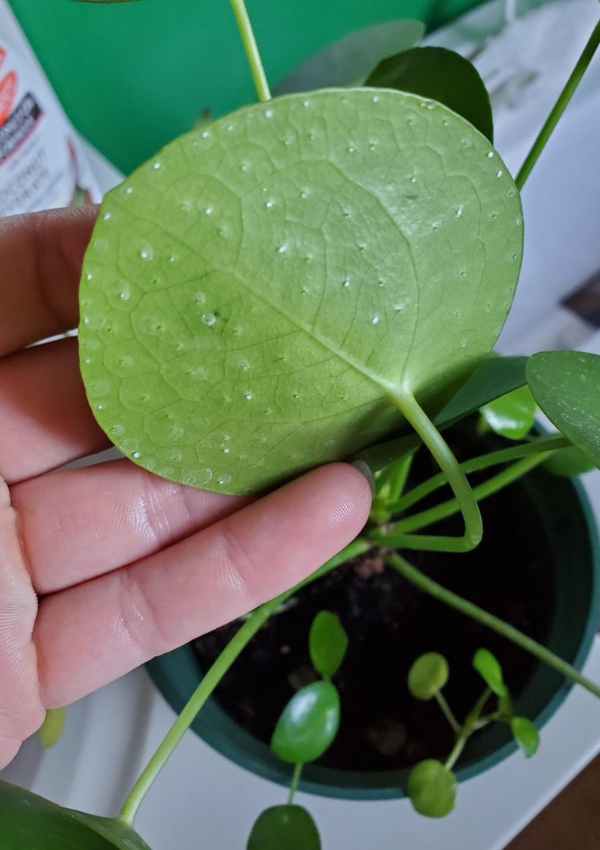
Before turning darker and drying up, the spots will at first appear pale. As the dots move from leaf to leaf and then from plant to plant, you will see that they continue to spread.
Frost
One thing that might swiftly harm your Pilea is frost. If you live in a region with severe winters, you might believe that a plant grown inside is immune to this issue. If your plant is near a window, where temperatures may be significantly lower than in other parts of the room, it may not appear to be as warm as it may seem.
Frost causes plant cells to grow and then burst, which can be lethal. First, Frost damage shows dark, damp spots on leaves and leaf tips, and then the rest of the plant dies. New, young leaves are typically the first to be impacted.
Pests & Insects
Pests cause white spots on your money tree leaves, including spider mites and insects like aphids, mealybugs, and leaf miners. In your money plant leaves, for instance, spider mites can appear as white specks because they hide themselves in silk. The main cause of the white patches on money tree leaves is pest infestation.
When many pests attack them, money tree leaves become white, yellow, or pale. You may also observe that the plant becomes weakened. Because many of these insects are sap-sucking in nature, not all of them will leave bite marks on the money leaves.
Mineral deposits
If your plant develops white patches, these can be cystoliths or mineral deposits. Mineral deposits are a normal occurrence and pose no threat. It is frequently possible to gently wipe any excretions from these dots off the leaf, but doing so isn’t necessary for the plant to thrive.
Because of their size and color, these tiny spots might occasionally be mistaken for spider mites. While closely observed mites on the leaves appear to be moving, these are immobile and have a roughly symmetrical and regular distribution.
Minerals are excreted by specialized cells called Lithocysts as cystoliths. These are not present in all plants, but those frequently excrete their minerals as hard, whitish patches or pale spots on the underside of their leaves.
None of these are particularly bad for the plant and don’t necessarily indicate a problem. It may, but may not necessarily, be a sign that the plant is being grown in somewhat greater humidity or that it is about to be slightly overwatered.
Chinese Money plant white spots treatments
You may do a few things to solve your money tree leaf white spot issues. Neem oil, leaf scrubbing, chemical fungicides, treating nutrient deficiencies, and ensuring they receive adequate sunlight are a few examples of things you can do.
1. Find the Best Location to Grow Your Money Trees
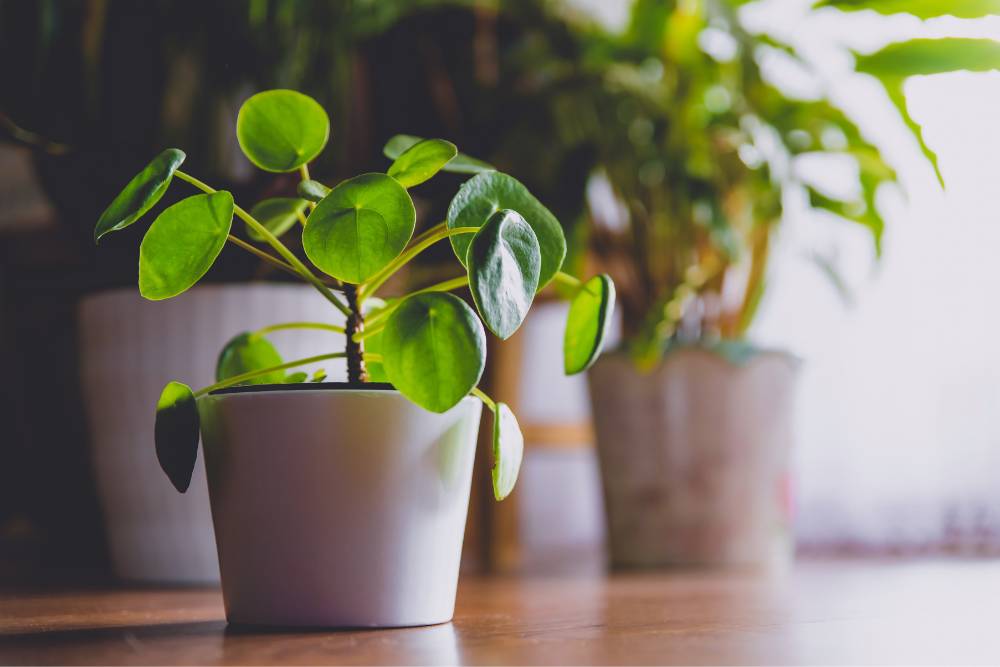
Bright but indirect light is ideal for money plant locations. You should move your money leaves a few inches away from direct sunlight because it can burn them if exposed for an extended period of time.
If you wish to grow them close to a window, ensure it is shaded, especially during the summer. They may also be grown with the use of grow lights. Additionally, a location with a humidity level of about 50% is ideal. There may be serious issues if the humidity level exceeds the optimum range of money plants. ensure that the space is properly ventilated.
2. Neem Oil for Pest Control
Neem oil can kill or deter insects and other pests that are causing the white patches on your money trees. Neem oil has a strong aroma that repels insects; plants with oil on their leaves don’t attract them. The oil just needs to be applied at the right time.
Neem oil should be sprayed on your plants whenever pests are present, especially in the early morning to ward off diurnal pests and late at night to ward off nocturnal pests. Neem oil should not be used excessively during warmer seasons or hours of the day to avoid burning the leaves of your money plants.
3. Trim the Branches and Leaves
As soon as you notice white spots on a money tree’s leaves, you should first separate that tree from the others to prevent the infection from spreading (if the spots are the result of an infection). It is now time to take action by trimming the leaves or branches with the spots after the money tree plant has been isolated.
It indicates that the plants may be contaminated if the newly emerging leaves have spots when they are fully developed. Discover the root of the problem while the plant is being isolated, and look for similar symptoms in other plants.
4. Treat the Nutritional Deficiencies in your Money Tree
If you’re unsure which specific nutrient your money plants are deficient in, you should feed them with a balanced fertilizer.
Use foliar fertilizer or other solutions that dissolve quickly in water to immediately repair plant nutrient deficits. Your money plants’ leaves should be fertilized, and you should start to notice changes after a few days.
If you don’t know exactly what you’re doing, don’t use rotten manure or other organic fertilizers to make up for nutrient deficiencies. Additionally, be careful not to overfeed the plants to avoid burning their leaves.
5. Frequently Wipe Your Money Leaves
Your money leaves are your favorite since they are lush and new-looking. You must keep wiping them with a clean cloth on a regular basis if you want to keep them fresh, green, and shining. The cloth will assist in removing dirt, insects, and other foreign materials from the leaves of your money tree.
Use either a dry or a moist cloth. Be careful not to damage the leaves by wiping them too firmly. Additionally, avoid wiping them with a wet towel to prevent long-lasting water droplets from adhering to their surface. You should clean your money leaves with a moist cloth in the morning.
6. Transplant Your Money Trees
If the money plants are still growing in the contaminated soil, there is little you can do to save them if they develop a soil-borne infection.
Chemical fungicides and other treatments can get rid of some bacteria, but there is no guarantee that you can get rid of all potentially dangerous microbes in the soil. Therefore, repotting the plants is the best course of action.
7. Ensure that the Trees Receive Adequate Light
If plants are grown with a little bit more exposure to light, the problem of money tree leaves turning white due to insufficient light can be readily fixed.
Money plants require at least six hours of light daily to flourish, even if they dislike direct sunshine. All of your plants’ leaves should be green, and none of their stalks should be slack, indicating they are receiving enough light.
8. Fungal Disease
- Use proper watering techniques and avoid letting the plant stand in wet potting soil.
- Water the plant first thing in the morning to give it lots of time to dry out over the day.
- Ensure that there is adequate air circulation because fungi grow in still air.
- After identifying the disease, remove any affected leaves and dispose of them safely.
- Make sure there isn’t too much dampness surrounding the plant.
- As a last option, treat the plant with a fungicide you may get at your neighborhood garden center if the infection gets too bad.
9. poor airflow
A number of health issues, including the spread of fungi illnesses, can be directly attributed to stagnant air. While no houseplant enjoys being maintained in a draft, air must circulate freely. The emergence of fungi illnesses is one of the most common signs of impaired circulation.
Avoid crowding this plant with too many other plants, as this will reduce the quantity of air that can circulate, and open a window and leave it open for a few hours of the day once the weather has warmed up. After it has warmed up outdoors, open a window and leave it open for a few hours each day. Avoid placing this plant close to other plants that require a lot of space because this will restrict airflow.
10. Frost damage
Avoidance is the best course of action because it is difficult to heal a plant that has been injured by frost.
- If a plant suffers mild frost damage, moving it to a warmer location may help it recover.
- In the winter, avoid placing your plant close to a window.
- Avoid making drafts.
- Check the temperature using the thermometer to see how low it drops overnight.
- 20+ Chic Boho Bedroom Ideas for a Cozy and Stylish Retreat - June 20, 2024
- 12+ Modern Boho Living Room Ideas to Create a Unique Oasis - June 10, 2024
- 10 Stunning Canopy Bed Ideas for a Dreamy Escape - May 16, 2024

